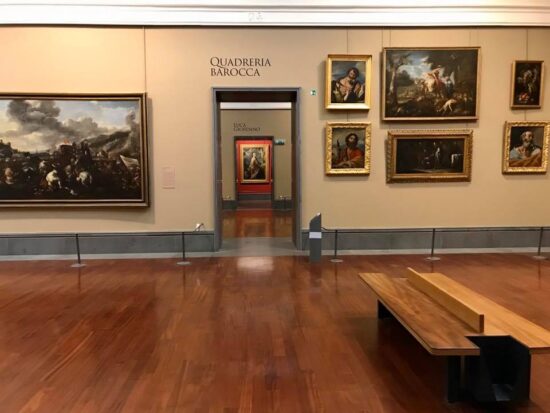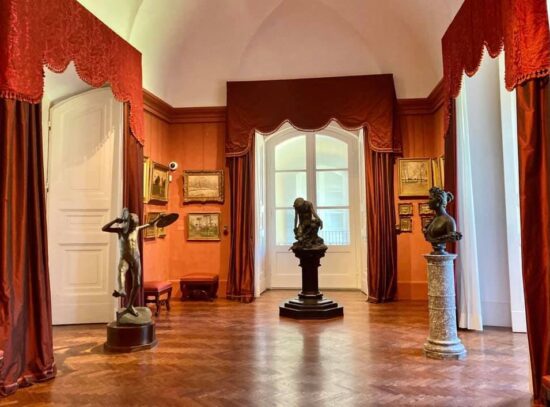Museo e Real Bosco di Capodimonte
In Naples, nothing is done without aspiring for grandeur: the Museo e Real Bosco di Capodimonte, or Reggia di Capodimonte, is a Bourbon hunting lodge, is a three-story buildings, totaling 14,000 square meters, with 124 galleries that house one of the most important art galleries in Europe, whose core the main one is formed by the famous Farnese Collection.
The collections include works by the greatest names, from Titian to Raphael, from Michelangelo to Caravaggio, and from Masaccio to Botticelli. Then again Mantegna, Rosso Fiorentino, Correggio, Parmigianino, Lotto, the Carracci brothers, Goya, Luca Giordano, Ribera, Artemisia Gentileschi, and many others.

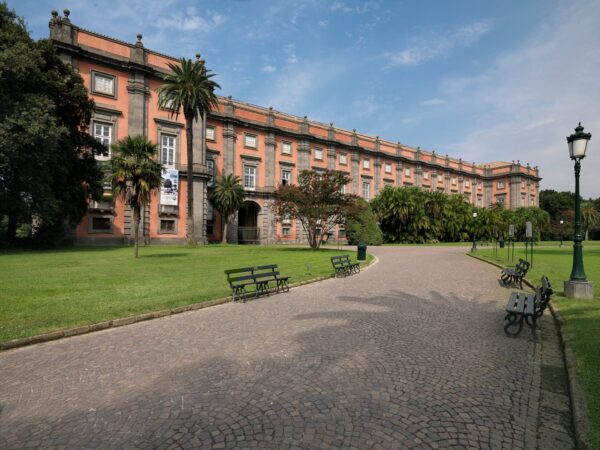
There is an extraordinary collection of porcelain and decorative arts, a very rich cabinet of prints and drawings, and an important collection of tapestries and royal furniture, without forgetting the precious gallery of the Mirabilia Farnese.
The modern arrangement of the Royal Apartment, which completes the path on the first floor of the Capodimonte Museum, intends to revive the rooms of a historic building that was born as a museum and which over time becomes one of the residences of the sovereigns.
A story told in the rooms dedicated to its main protagonists such as Charles of Bourbon who decides the construction of the palace in 1738, Ferdinand IV who becomes king of Naples at the age of nine, Ferdinand II, author of the completion of the palace, up to the French decade and the rearrangements postunitary.
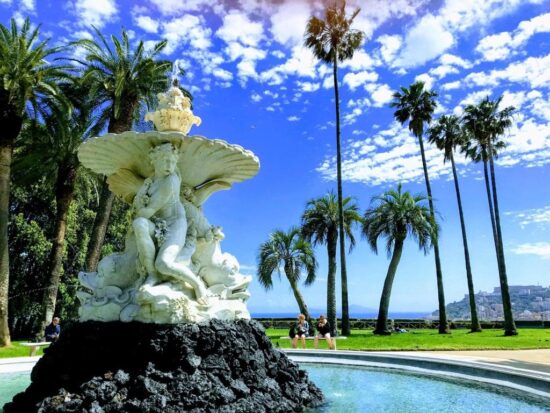
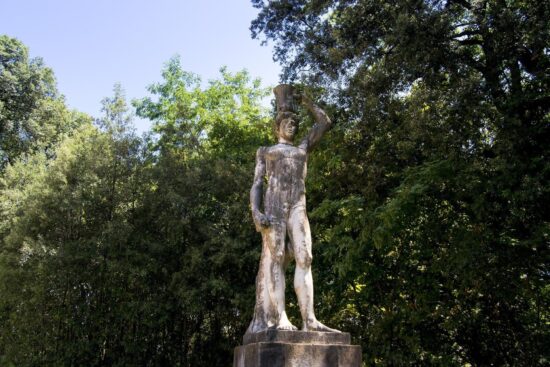
The palace, little inhabited by the Bourbon kings, becomes a more stable royal residence with the arrival of Carolina Bonaparte who adapts the apartment to the taste of the imperial court, and Gioacchino Murat who realizes the road connecting with the city center, solves the water supply problem and uses the work of artists of the caliber of Antonio Canova, author of the plaster portrait of Letizia Ramolino Bonaparte.
The building became the subject of a radical renovation starting in 1838 when Ferdinand II decided to give it a new look. This period also completed the decoration of the Party Room with mild and sumptuous painted decorations in neoclassical styles, like the one that adorns the bedroom ‘Pompeii’ of Francis I and Maria Isabella, located in the south wing, the oldest of the palace, which overlooks the sea of the Gulf of Naples.
With the unification of Italy and the appointment of the Piedmontese Annibale Sacco as director of the Royal House of Savoy, some rooms were arranged to set up a “modern” painting and sculpture gallery in the building, of which the Salone Camuccini is a striking testimony which takes its name from the monumental canvases of the Roman painter.
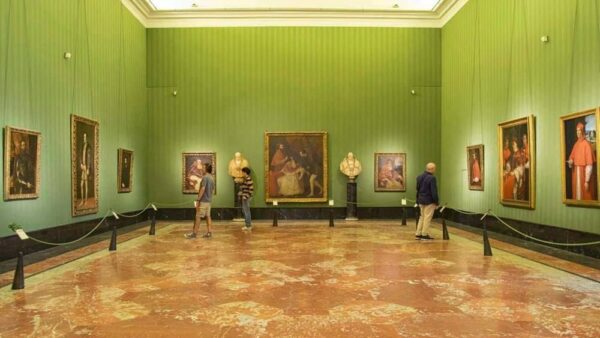

Sacco himself collects in the Capodimonte Museum treasures from other Bourbon residences such as the precious porcelain sitting room, transferred here from the palace of Portici in 1866, or the inlaid marble floor found in a villa of Emperor Tiberius in Capri in the Bourbon period and reassembled in the Salone della Culla, which owes its name to the cradle designed by Domenico Morelli (today at the Royal Palace of Caserta ), donated in 1869 by the city of Naples to the Savoy for the birth of Vittorio Emanuele III.
On display in the porcelain, the gallery is a selection of Neapolitan and European porcelains from the Bourbon collections, except the statue of the Immaculate Conception, purchased in 1972, among the few specimens of porcelain with a religious subject made on a model by Giuseppe Gricci from the Royal Porcelain Factory of Capodimonte. The tableware and furnishing objects, used in the various Royal Sites, are collected and rearranged under the direction of Annibale Sacco, director of the House of Savoy, who divides the artifacts by factories according to the exhibition criteria preserved in the current setting.
Ample space is reserved for the Goose Service, so named due to the presence on the knob of some tureens of the putto choking a goose, a motif derived from Hellenistic specimens. Performed by the Royal Factory of Naples (1771-1806) for the Bourbon court in the last decade of the 18th century, the service consists of over four hundred pieces, some of which are exhibited in other public collections.

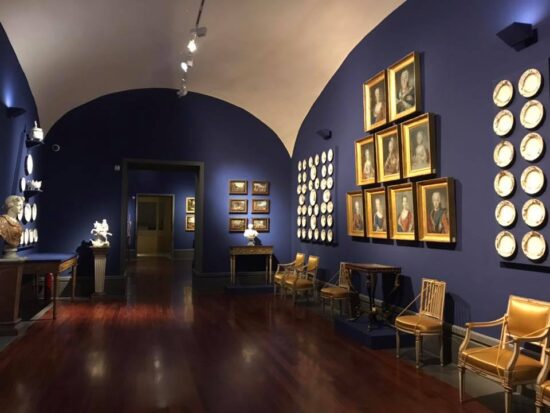
Used for official lunches to present to guests the monuments and natural beauties of the Kingdom, from Abruzzo to Sicily, in the ancient inventories it is indicated as ” Service of Neapolitan views “, derived from engravings by Cardon, Hamilton, and Saint-Non and from paintings by Joli and Hackert.
The most conspicuous nucleus of the porcelains of the Royal Factory of Naples consists of a considerable number of biscuits, which are flanked by the works of European manufacturers, such as those of Berlin, Sèvres, and Vienna, which arrived in Capodimonte through Queen Maria Carolina of Hapsburg. , wife of the king of Naples Ferdinand IV of Bourbon, and daughter of the empress of Austria Maria Teresa.
The sitting room made entirely of porcelain for Queen Maria Amalia of Saxony was part of her private apartment in the Royal Palace of Portici. Completed between 1757 and 1759, it is one of the last achievements of the Royal Porcelain Factory of Capodimonte commissioned by Charles of Bourbon and transferred by him to the Buen Retiro near Madrid when, in 1759, he became king of Spain with the name of Charles III.


All the skilled workers and artists of the Fabbrica participate in its realization, which follows the project by Giovan Battista Natali, painter, and quadraturist from Piacenza, such as those involved in the processing of the pieces, under the direction of Giuseppe Gricci, in their cooking, or the execution of the stuccoes. The room, lavishly decorated with chinoiserie, has a quadrangular plan with walls entirely covered with porcelain plates, fixed to a wooden frame, interrupted by six large mirrors, and completed by a stucco ceiling in imitation of porcelain.
The decoration consists of branches, leaves, fruits and flowers, musical trophies, and monkeys interspersed with small and large mirrors with scenes of Chinese life. The living room is enriched by the twelve-arm chandelier depicting a young Chinese with a melancholy and winking air who prods a dragon with his fan. With the Savoy family in 1866, the sitting room was dismantled from the Royal Palace of Portici and transferred to Capodimonte, while the stucco ceiling reached the Museum and was rejoined to the walls only in 1957. MORE
